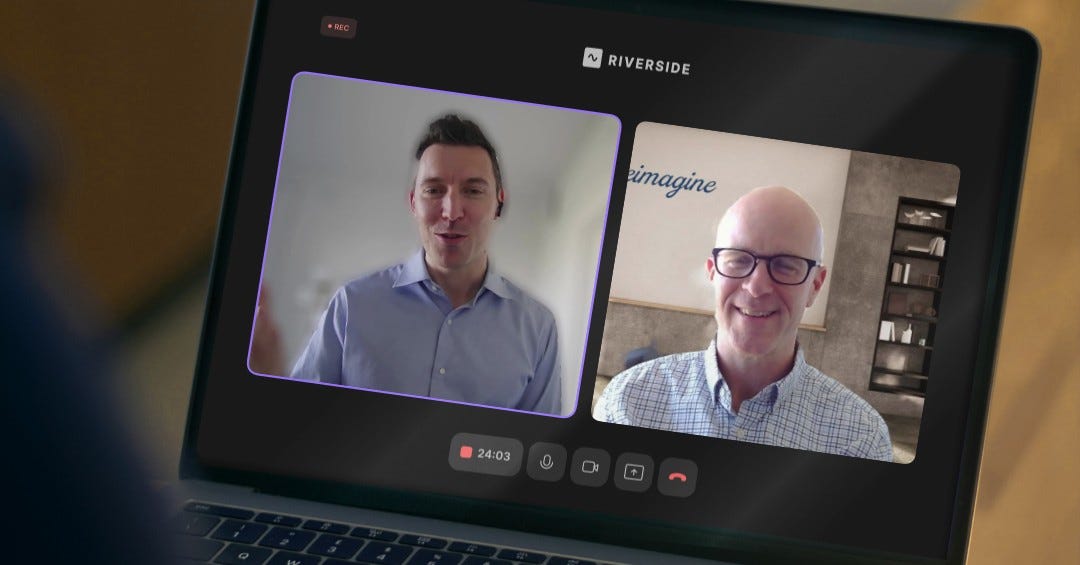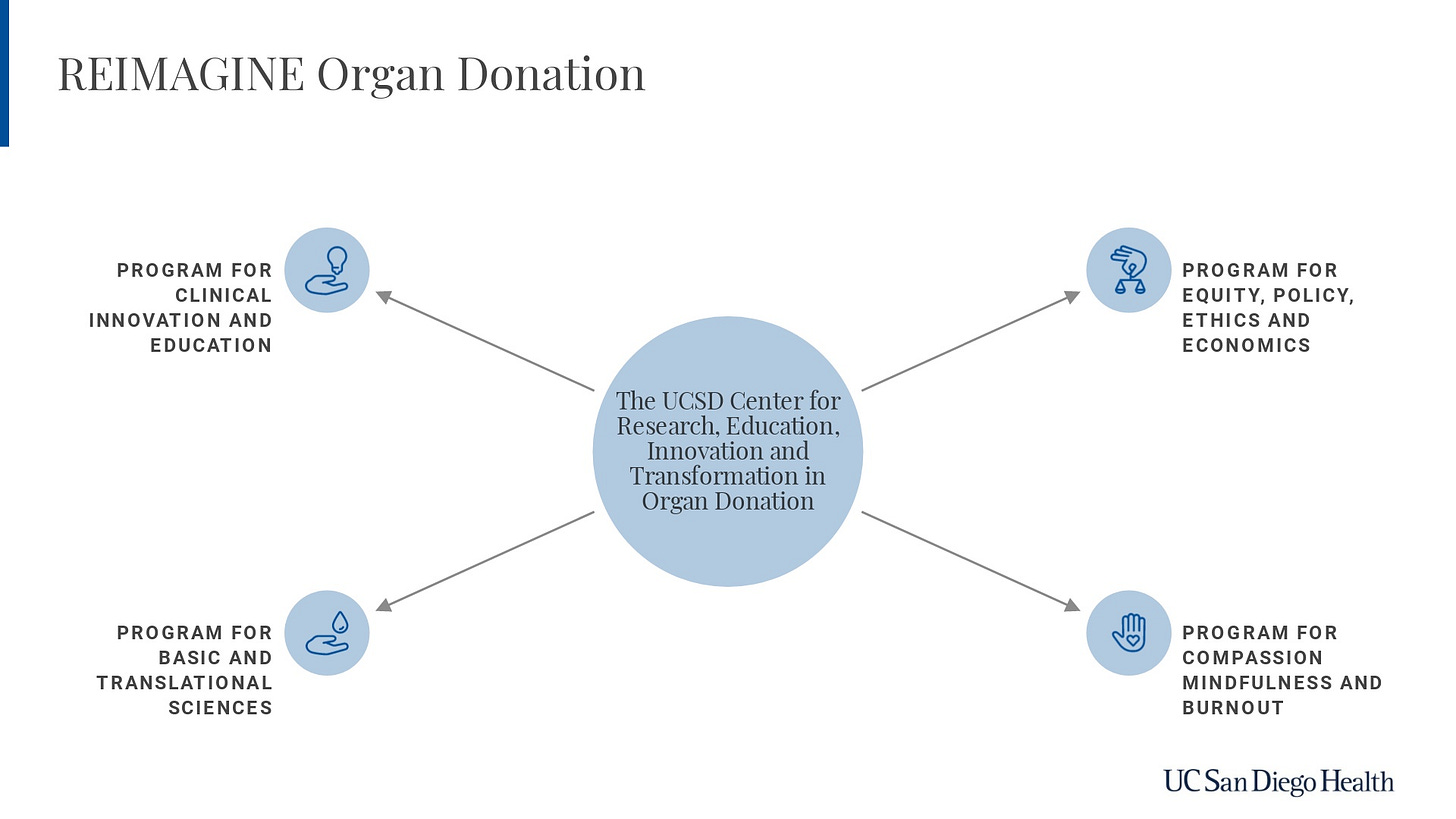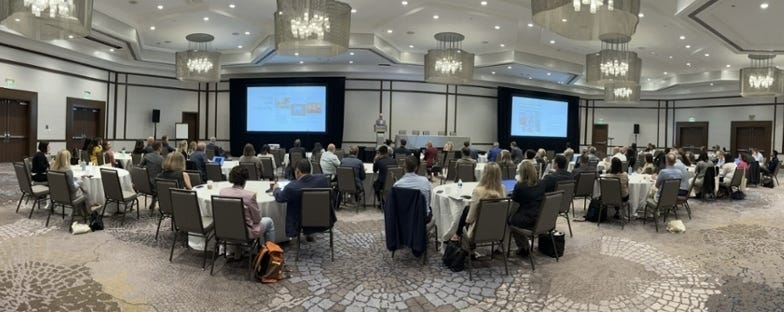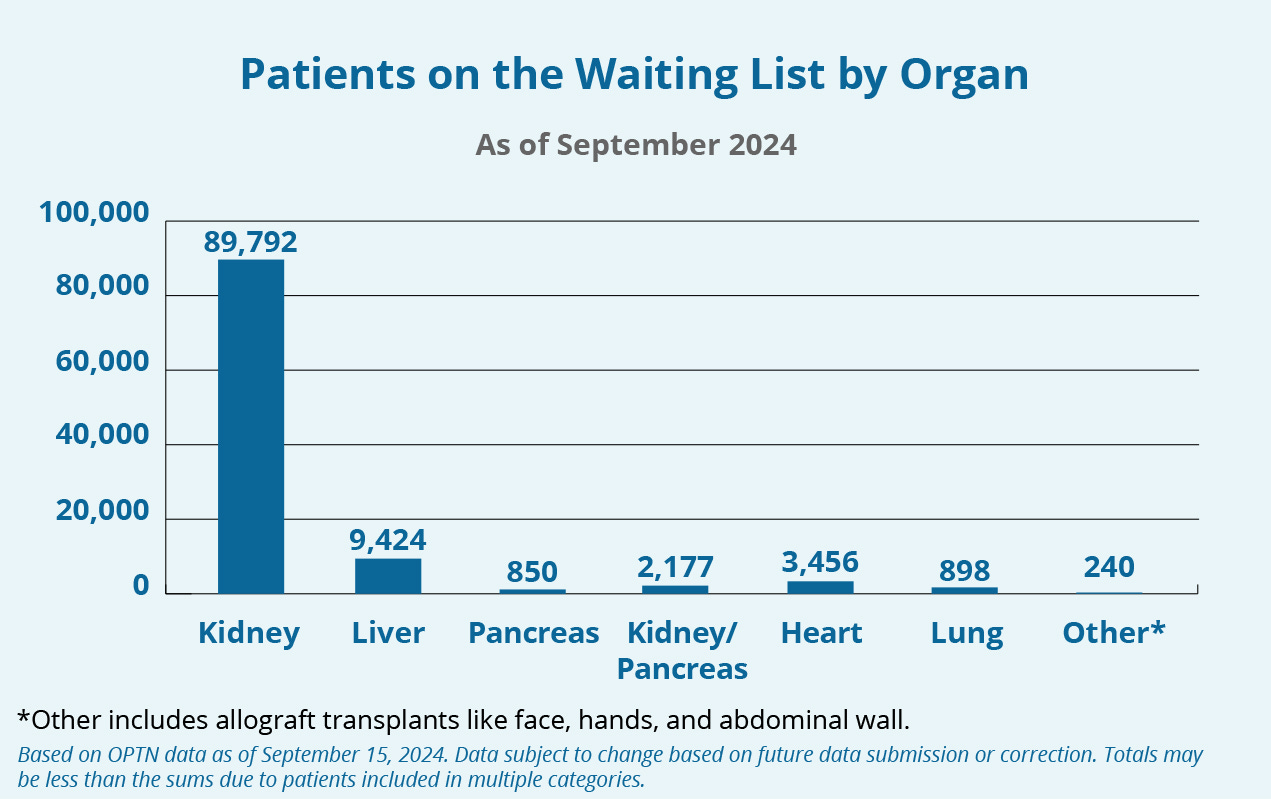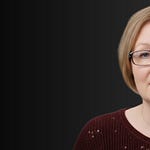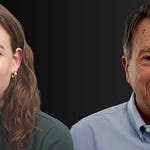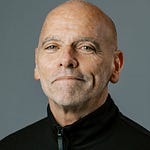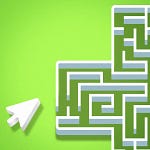When it comes to saving lives through organ transplantation, the biggest barrier isn’t surgery or post-transplant care—it’s the shortage of available organs. In the United States, 17 people die each day while waiting for a transplant, and every eight minutes another name is added to the list. Despite decades of advances in immunology and outcomes research, the bottleneck remains upstream: how organs are donated, preserved, and allocated.1
Dr. Gabe Schnickel, transplant and hepatobiliary surgeon at UC San Diego, founded the REIMAGINE Center to confront that challenge directly. Bringing together programs in education, equity, science, and compassion, the Center is the first U.S. initiative of its kind to focus squarely on organ donation and allocation. Its goal is simple but ambitious:
No organs wasted. No patients waiting.
What’s Inside:
Gabe’s path from Colorado to UCLA and UC San Diego
Why organ availability remains the critical bottleneck in transplantation
The REIMAGINE Center’s four pillars and leadership team
How machine perfusion extends organ viability and improves outcomes
Why living donation has remained flat for 25 years
The importance of bringing new disciplines into transplantation
What to expect from the 2025 REIMAGINE Symposium in La Jolla
In this conversation, Gabe shares the Center’s vision, explains how innovations like machine perfusion are redefining preservation and logistics, and describes why fresh perspectives—from economists to psychologists to donor families—are essential to transforming transplantation. He also previews the upcoming REIMAGINE Symposium in La Jolla, designed to bring bold ideas into action. Thanks for being here and hope you enjoy this interview as much as I did!
Q&A with Gabe Schnickel
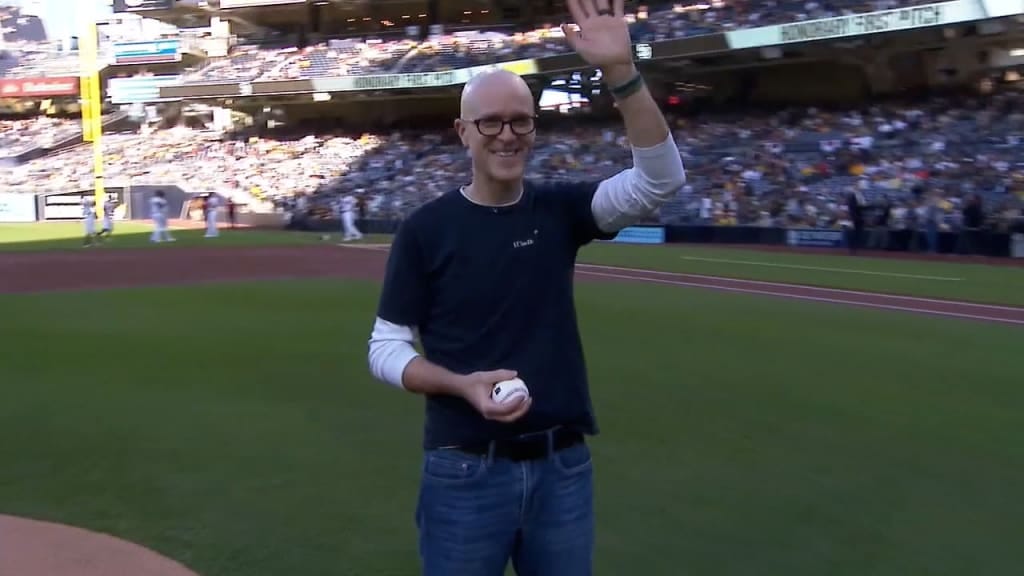
Dr. Schnickel, let’s start with you. Tell us about your background.
I’m a transplant and hepatobiliary surgeon at UC San Diego, where I serve as Surgical Director of the Liver Transplant Program and Interim Chief of the Division of Transplant and Hepatobiliary Surgery. I’m also Executive Director of the REIMAGINE Center. I grew up in Colorado, went to the University of Colorado for undergrad and medical school, trained at UCLA, and after some time on the East Coast, I returned to Southern California in 2017. Hard to believe it’s already been eight years.2
Tell us about the REIMAGINE Center. What is it, and why did you create it?
REIMAGINE stands for Research, Education, Innovation, and Transformation in Organ Donation. The idea was to create an academic center focused specifically on organ donation and allocation. Most transplant research has centered on the post-transplant phase—immunology, tolerance, outcomes—but I kept running into challenges in the donation system itself. There’s a huge shortfall in organs available to patients. By harnessing expertise across a major university, we can take a multi-disciplinary look at donation and allocation, and ultimately expand the donor pool. Our vision is simple: no organs wasted, no patients waiting.
So supply is the main challenge, but are there others you’re working on?
Yes, supply is central, but there are systemic issues too—equity, process, policy, logistics. The donation and allocation system can be improved. We want to be part of shaping those improvements, so that more patients have access to the organs they need.
How do you structure the Center to tackle such a broad problem?
We organize our work around four pillars, each addressing a critical dimension of organ donation and transplantation:
Education & Innovation is about raising public and professional understanding while also driving forward new technologies in organ preservation and donation processes. For example, we’ve launched training programs to bring cutting-edge perfusion technology directly into clinical practice, and we host symposia and seminars to spread knowledge and foster interdisciplinary collaboration.
Equity, Policy, Ethics & Economics focuses on fairness. Organ donation has real disparities built into it—across race, geography, and socioeconomic status. We want to shape policy so that access to transplantation is truly equitable. That means looking at ethics, economics, and systemic barriers that determine who gets an organ and who doesn’t.
Basic & Translational Sciences bridges research and practice. Led by Dr. Aleah Brubaker, this program is advancing work in revitalizing organs that would otherwise go unused, exploring new preservation techniques, and pushing the science that can help us expand the donor pool in very tangible ways.
Compassion, Mindfulness & Wellness may surprise people, but we view it as central. Organ donation is the ultimate act of compassion, but the process is also emotionally demanding for donor families, recipients, and healthcare teams alike. Led by Dr. Fadel Zeidan, this program integrates evidence-based mindfulness and communication practices to support families, prevent burnout among providers, and foster resilience in what is a very high-stakes, high-stress field.
Together, these pillars allow us to work on science, policy, logistics, and human well-being all at once. That’s what makes REIMAGINE unique.
Tell us about the team. Who is leading this work?
Dr. Aleah Brubaker leads our translational science work at the UCSD Revitalization Lab. Dr. Mita Shah, a transplant nephrologist, heads Education & Innovation. Dr. Sheri Hartman, Assistant Dean for Research at UCSD’s School of Public Health, leads Equity, Policy, Ethics & Economics. And Dr. Fadel Zeidan, a leading mindfulness researcher at UCSD’s Sanford Institute for Empathy and Compassion, directs the Compassion & Wellness program. Along with our Managing Director, Leila Adler, they’ve helped us build momentum quickly.
Are these efforts mostly internal, or do you rely on external partnerships too?
Partnerships are essential. For example, we’ve worked with the Donation and Transplant Institute in Spain to launch educational programs. We’ve connected with researchers across the U.S., and even environmental scientists and business faculty at UCSD, who bring fresh insights into organ logistics. The Center gives us a platform to convene these types of collaborations.3
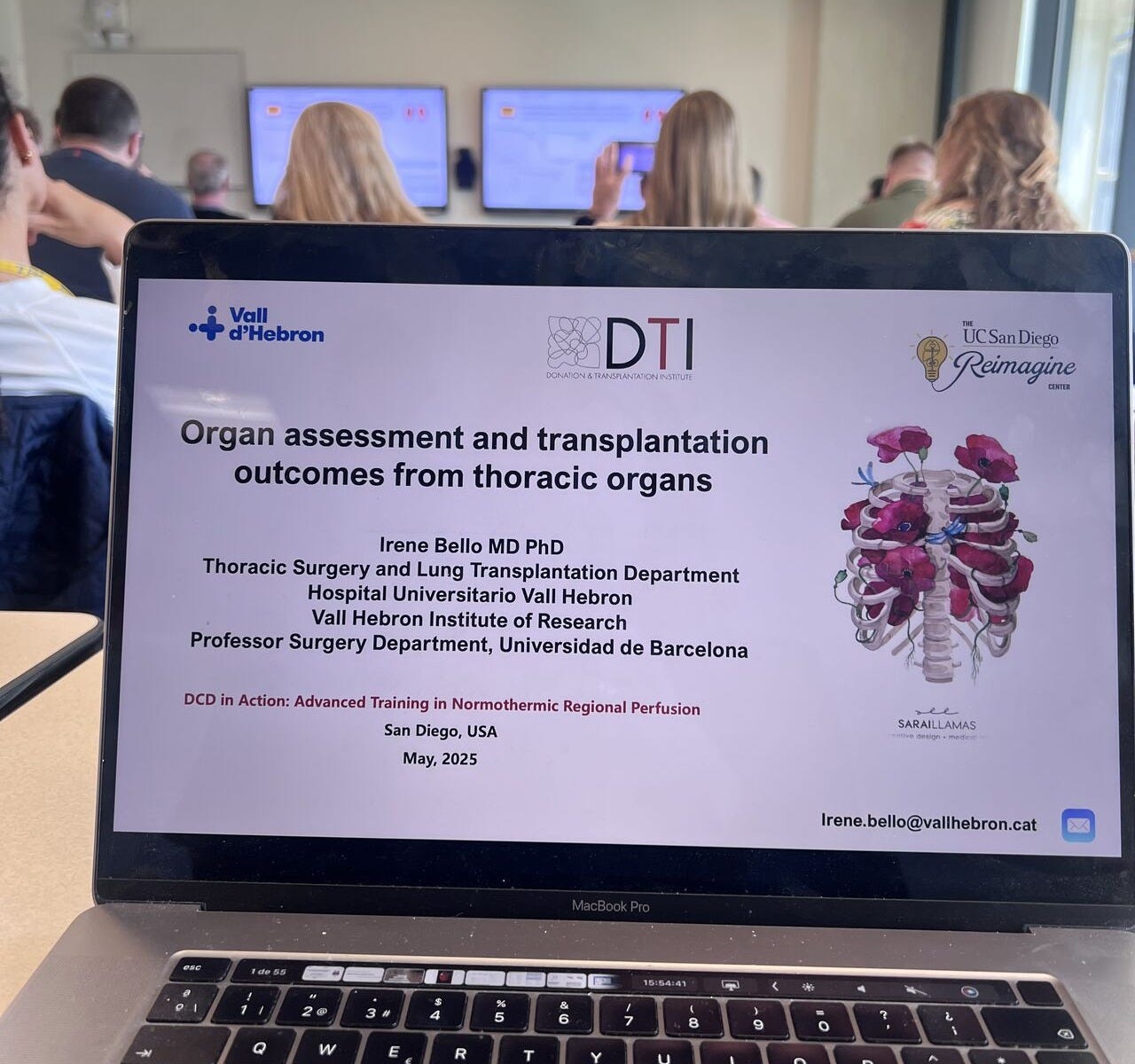
You hosted your first symposium last year. What makes it different from other transplant meetings?
Most meetings focus heavily on post-transplant outcomes. We wanted something laser-focused on organ donation and allocation, aligned with our four pillars. Our symposium is smaller and more intimate, and we intentionally include recipients, donor families, and living donors—not just professionals. This year’s theme is Bold Ideas in Transplantation: if you could change one thing, what would it be? The goal is to leave with actionable steps, not just presentations.
What’s the biggest innovation you’ve seen in transplantation in your career?
Machine perfusion, without a doubt. Historically, once an organ was removed, it went into cold storage, and we had only a few hours to transplant it—about four hours for a heart, eight for a liver. That put immense pressure on the system: you needed helicopters, jets, multiple surgical teams working simultaneously, and still the risk of ischemic damage was high.
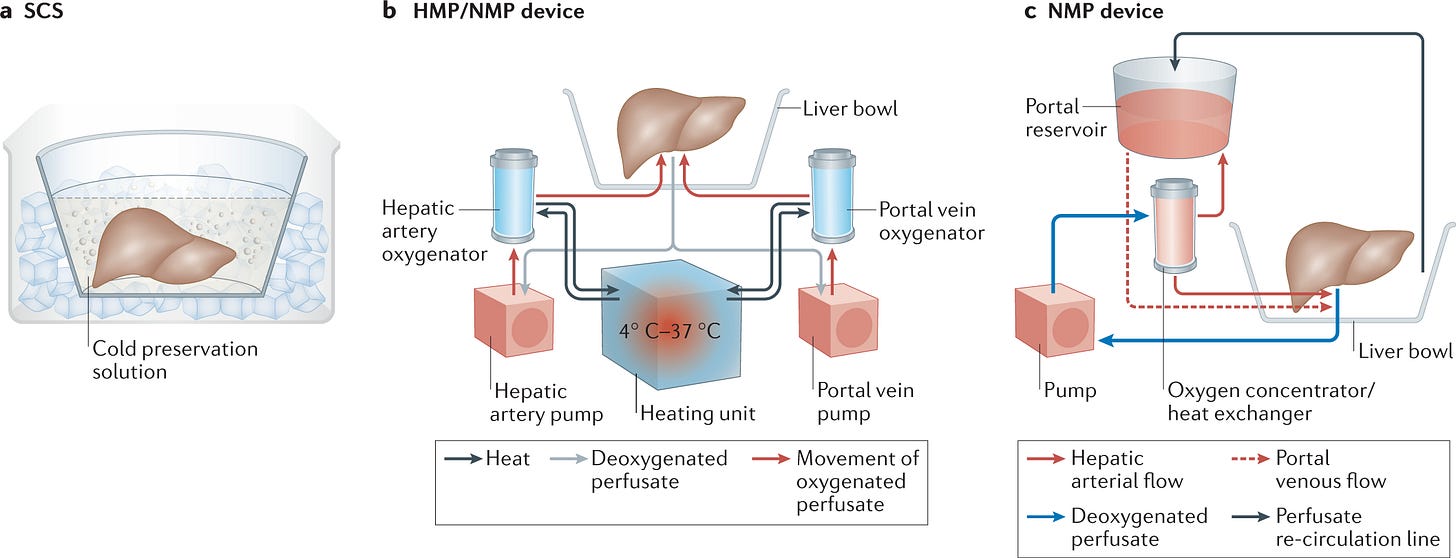
Now, with machine perfusion, we can connect the organ to a device that continuously supplies it with warm, oxygenated blood and nutrients. A heart will actually beat on the machine. A liver will metabolize lactic acid and produce bile. Lungs can be ventilated and oxygenated. This not only buys time—sometimes up to 40 hours or more—but also lets us test organ viability before transplant. We can biopsy a liver while it’s metabolically active and know whether it will function well in the recipient.
The real game-changer is that we’re beginning to move beyond preservation into rehabilitation. We’re asking: can we improve an organ while it’s on the machine? Can we reduce fat in a liver, correct damage, even introduce genetic modifications? That opens up an entirely new frontier of science and medicine.
At UCSD, our Revitalization Lab, led by Dr. Brubaker, is right in the middle of this work. We were early adopters of perfusion, and it’s exciting to see how quickly the field is moving. What started as a logistical solution—buying more time—has become a platform for innovation that could redefine transplantation.
Looking ahead, who do you most want to hear from or collaborate with?
First, the transplant community we don’t always hear enough from—donors, donor families, recipients. I’m also deeply interested in living donation, particularly kidney donation. Despite its potential, living donation rates haven’t increased in 25 years. Why is that? We need psychologists, economists, and others outside the field to help us understand motivations and barriers. Fresh eyes often bring the most creative solutions.
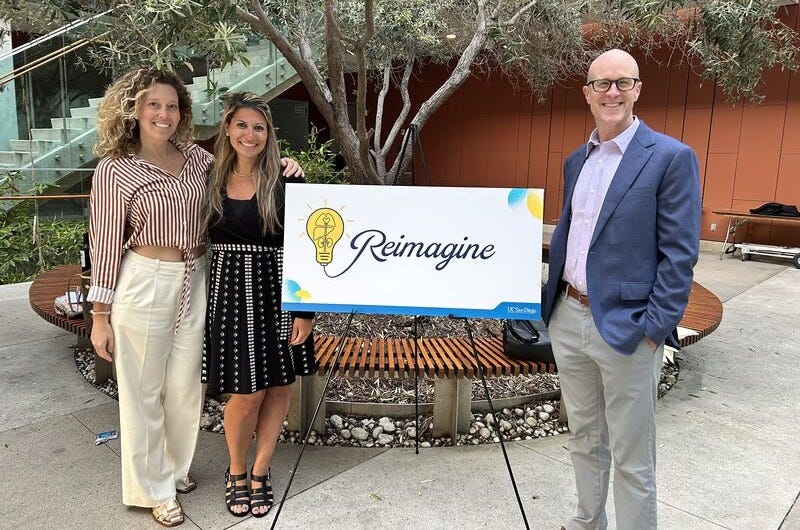
We’re only seeing the tip of the iceberg when it comes to need. If organs weren’t so scarce, we’d discover even more patients who could benefit. Expanding donation isn’t just about shrinking the waiting list—it could transform access to care for thousands more than we currently recognize. That’s why REIMAGINE exists, and why we’re eager to collaborate with anyone who wants to help move the field forward.
And for those who want to get involved or contribute ideas, tell us a little more about your upcoming symposium—what’s planned and who should attend?
We’re open for business and open for ideas—we don’t pretend to have all the answers. That’s why the symposium is so important.
We’ll host our second annual REIMAGINE Symposium October 12-14 in La Jolla. The theme is Bold Ideas in Transplantation. We’re asking everyone—from leading surgeons and scientists to living donors and recipients—to answer one question: if you could change one thing about the system, what would it be?
It’s intentionally designed to be different from the giant meetings. Instead of hundreds of talks, we’ll have an intimate, interactive setting where people can actually listen, debate, and workshop solutions. We want to leave not just inspired but with concrete next steps—ideas that plug directly into our four pillars and become real projects.
So for anyone with a stake in transplantation—whether you’re a policymaker, researcher, donor family, or someone with an idea you think could make a difference—this is the room to be in. We’d love to have you join us.
My thanks to Dr. Schnickel for joining us and sharing his team’s work. For more on the REIMAGINE Center, see their website here. For more on the center’s four pillars and leadership team, visit the programs page here. For more on the differences between normothermic machine vs. cold static storage in organ transplant see this 2023 randomized controlled trial published in Nature Medicine. For a higher level overview of the history and future of organ preservation, this 2018 Nature paper is a good starting point. I’ve also written extensively about transplant, including topics like Xenotransplant, the iBox Score, the End Kidney Deaths Act, and 25 Questions for the community. And to register for the upcoming REIMAGINE Symposium, October 12-14 in La Jolla, visit them online here.
Organ Donation Statistics — HRSA
Q&A: Gabriel Schnickel, M.D., M.P.H. — surgery.ucsd.edu
![Signals From [Space]](https://substackcdn.com/image/fetch/$s_!IXc-!,w_80,h_80,c_fill,f_auto,q_auto:good,fl_progressive:steep,g_auto/https%3A%2F%2Fsubstack-post-media.s3.amazonaws.com%2Fpublic%2Fimages%2F9f7142a0-6602-495d-ab65-0e4c98cc67d4_450x450.png)
![Signals From [Space]](https://substackcdn.com/image/fetch/$s_!lBsj!,e_trim:10:white/e_trim:10:transparent/h_72,c_limit,f_auto,q_auto:good,fl_progressive:steep/https%3A%2F%2Fsubstack-post-media.s3.amazonaws.com%2Fpublic%2Fimages%2F0e0f61bc-e3f5-4f03-9c6e-5ca5da1fa095_1848x352.png)
![Signals From [Space]](https://substackcdn.com/image/fetch/$s_!NnOt!,w_152,h_152,c_fill,f_auto,q_auto:good,fl_progressive:steep,g_auto/https%3A%2F%2Fsubstack-post-media.s3.amazonaws.com%2Fpublic%2Fimages%2F688fc47b-7202-4a2e-b4f4-fea2b047ab1b_1500x1500.png)

